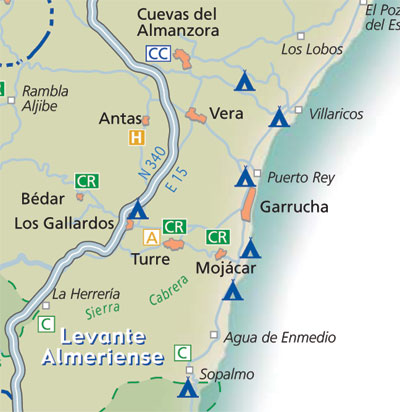Vera, surrounded by fertile farmland, has a long history and rich heritage. Its name comes form the Phonecian factory of Baria (Villaricos).
In Moorish times, the population moved inland form the coast to the area known as Vera la Vieja, on Cero del Espíritu Santo hill, finally being handed over to the Christians in 1488.
In 1518 the city was flattered by a disastrous earthquake and it was rebuilt on its present site. At the same time, the fortified church of Nuestra Señora de la Encarnación, was built.Outside its lines are quite severe while its interior is in the Gothic-Mudejar style.
Other works undertaken at the same time were building of the church of San Agustín, the shrine to Virgen the las Huertas and the Plaza Mayor at the very heart of the city.
Vera's heritage was further enriched over the following centuries with the building of other churches and religious builidings such as the shrine to San Ramón, dating from the 16th Century and of the Virgen de las Angustias, home to Vera's proctector. Civil buildings include the 17th-Century Fuente de los Cuatro Caños fountain.
The 19th Century contributed recreational areas such as la Glorieta and the Plaza de Toros (bullring) as well as the Town Hall, boasting one of the best Historical Archieves in Andalucía and the Ethnographical and Archaelogical Museum.
Apart from its cultural offer, Vera also posseses some magnficant beaches, a golf course and wide range of active tourism to make the most of the thousands of hours of annual sunshine.


